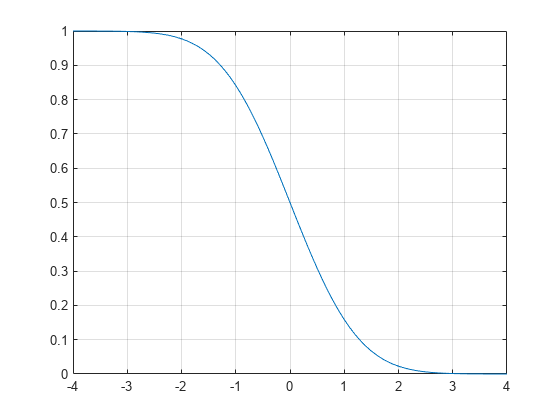qfunc
Q function
Syntax
Description
y= qfunc(x)
Examples
Input Arguments
Output Arguments
Algorithms
For a scalarx, the Q function is (1 –f), wherefis the result of the cumulative distribution function of the standardized normal random variable. The Q function is defined as
The Q function is related to the complementary error function,误差补函数, according to
Introduced before R2006a


